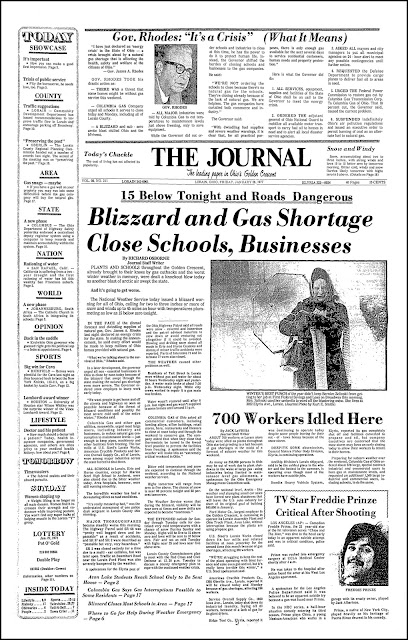And here's one of those stories, which has been retold with some regularity but with little detail. It appeared in the Lorain Journal back on January 18, 1929 and is about the remains of a mastodon that was found on the B. C. French family farm in Brownhelm Township.
As the article notes, "The discovery was made by some men who were digging a drainage ditch on the farm. When about three feet below the surface a spade struck something hard and the men were attracted by the peculiar sound. They examined further and found it to be a portion of an ivory tusk. Digging still deeper they uncovered the entire tusk, about seven feet in length and about eight inches or more in diameter at the largest end.
"When the discovery was made, the men working on the ditch realized that the fossil would be of great value and exercised extreme care in removing it. They were compelled to dig about eight or ten feet deeper to remove the entire remains. Dr. Lynda Jones, of the zoology department at Oberlin College, was called and the mastodon skeleton taken over by the college where it is now held as part of the school's archeological collection.
"Both tusks, the entire skull, and many of the body bones were uncovered."
Some of the bones were put on display in January 2001 at the French Creek Nature Center on Colorado Avenue as part of an Ice Age exhibit. An article written by Ron Vidika in the Morning Journal of January 18, 2001 noted that the discovery on the French family farm took place in the late 1800s.
You might be wondering (like me) if a mastodon and a mammoth are the same. Well, the National Park Service website has a great website page explaining the difference. It notes, "Mastodon were shorter and stockier than mammoths with shorter, straighter tusks."
The folks at Encyclopedia Brittanica provided this nice illustration comparing a mastodon, a mammoth and an elephant.
It just might come in handy if you're watching the Flintstones and need help identifying the various appliances.

















































